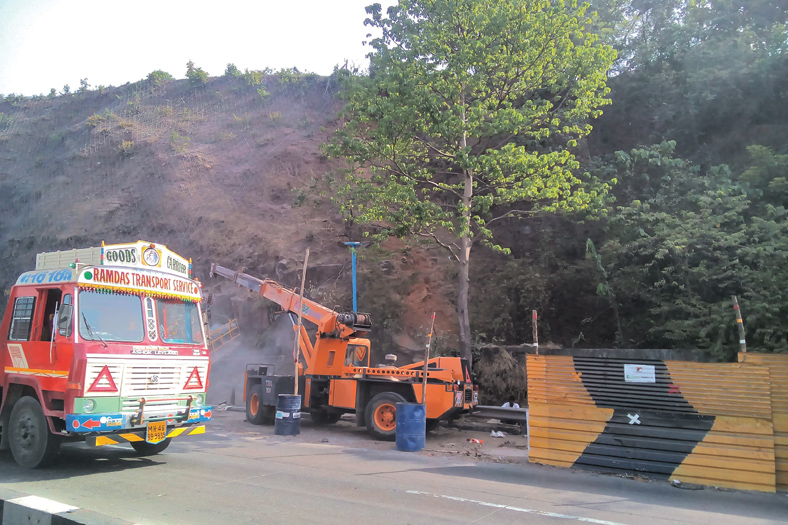Cementing Green

What makes green cement a sustainable building material?
A ugmentation of larger infrastructure projects has opened up vast opportunities for the cement industry in India. Though it’s a highly used material for the construction, it is considered as major culprit of environment. Today green or sustainable material for construction is talk of the town and cement is one of them. Since cement pollutes the environment it is dubious whether it is really an eco-friendly material or no. To understand more on what makes cement green and sustainable building material some of the experts have shared their opinion.
Is green cement, a sustainable building material?
Green cement is an all-time environment friendly substance. Its durable and versatile applications make its usage ubiquitous throughout the cities. From raw material production to demolition, it makes a natural choice for sustainable home construction. It is also a cementitious material that meets or exceeds the functional performance capabilities of ordinary Portland cement by incorporating and optimising recycled materials, thereby reducing consumption of natural raw materials, water, and energy, resulting in a more sustainable construction material.
Expressing his views on what makes green cement a sustainable building material Rohan Agarwal, MD, Geopreneur Group says, “Some benefits of using green cement for sustainable building material can help in resource efficiency; the predominant raw material for the cement in concrete is limestone as it’s the most abundant mineral on earth. The green cement helps maintaining long-lasting, rust free building that are durable. The use of green cement increases the life span by double or triple of other common building materials. The other advantage includes the thermal mass. They are highly energy efficient because they take advantages of concrete thermal mass ability to absorb and retain heat.”Although new technologies are constantly being developed to complement current practices in creating greener structures, the common objective of green buildings is to reduce the overall impact of the built environment on human health and the natural environment by efficiently using energy, water, and other resources, protecting occupant health and improving employee productivity and reducing waste, pollution and environmental degradation. “However, the concept of green cement is very new for the Indian market and it is essential to create as much as awareness as possible about the benefits of green cements to encourage developers to start using it over the regular cement,” he adds.
Concrete is the single most widely used material in the world – and it has a carbon footprint to match. Concrete production contributes 5 per cent of annual global CO2 production.
Every one ton of Cement (OPC) produced, emits 0.96 ton of CO2, there is an urgent need to promote blending materials (ex GGBS and PSC) to achieve lower CO2 emissions.
“Need of the hour is “Greener or Lesser Polluting Buildings” by use of industrial byproducts such as ground granulated blast furnace slag, which is otherwise a waste if not consumed,” states Rahul Akkara, Vice President, Strategy & Brand, JSW Cement.
“The products of BF slag are highly regarded as environment friendly materials that can protect the environment by limiting the exploitation of natural resources and reduce the amount of energy consumed in the mining of natural Resources,” adds Akkara while explaining about how slag is eco-friendly and can be used sustainable product.
Production of slag cement creates a value-added product and reduces air emissions at steel plants through the granulation process. Slag cement can be used in virtually all concrete applications. “It has been observed that when cement is replaced with ground granulated blast furnace slag, the durability and long term compressive strength increases,”states Akkara.
By using the portland slag cement and GGBS in construction the user can get their construction certified as green building. The goal of green building is to optimise energy performance without compromising the human comfort and well being.
Yatin Joshi, Head, ALCCOFINE, Ambuja Cements Ltd believes that technological advancement in the building material has helped reduce CO2 emission by making the material more durable. He informs, “After water; concrete is the biggest commodity consumed by mankind. Cement is an integral part of the concrete. Ordinary Portland Cement (OPC) has a major impact on the environment through CO2 emission. Lot of technological advancement have made it possible to reduce the OPC content in the concrete without compromising performance parameters. PPC, PSC and composite cements are bright examples of the measure taken to reduce the impact of CO2 emission. These cements are truly green due to reduced impact on natural resources, utilisation of industrial waste, reduced energy consumption during manufacturing processes, etc. Structures constructed with concrete containing such cements are more durable and incur less repair and maintenance cost in long term.”
Offering from companies
JSW provides products that are sustainable and environment friendly. Both its products, portland slag cement and GGBS are environment friendly due to the slag present in them.
Use of slag cement in concrete reduces the environmental impact of concrete by reducing greenhouse gas emissions by eliminating about 0.85 tonne of carbon dioxide for each tonne of portland cement replaced and requires 90 percent less energy than to produce a ton of portland cement.
Utilisation of slag and other by-products minimise burden on landfills, reduced virgin material usage, reduced fossil fuel usage, huge emission reductions and hence direct contribution to reversing the effects of global warming and climate change.
“JSW is the first cement manufacturer of India to get green cement award from CII for maintaining the ecosystem,” states Akkara.
The challenge in the building construction industry is striking the balance between the two pressing needs of human society, that is, meeting the consequential needs of our growing population, urbanisation and industrialisation, and protecting the environment. “At JSW, it is our continuous effort to look for ways to reduce the dependency on the availability of natural raw material,” states Akkara.
The products of JSW granulated slag are highly regarded as environment friendly and durable materials that can protect the environment by limiting the exploitation of natural resources, reduce the amount of energy consumed in the mining of natural resources and helps to achieve sustainability in construction with this regard.
Ambuja Cements has introduced Alccofine ultrafine additives based on revolutionary PSD technology. Alccofine 1203 particles, much finer than any cementitious materials, improves the packing density of paste component of the concrete. Due to its dual hydration process, it facilitates generation of higher amount of CSH gel which is responsible for development of strength. Addition of Alccofine particles results in refined pore structure of concrete. All these factors facilitate the production of highly durable concrete with lowest quantity of OPC. Many structures with design life of more than 100 years are being built by using Alccofine 1203.
“Utilisation of Alccofine 1203 facilitates the higher amounts of replacements of OPC by pozzolanic materials (up to 50 per cent fly ash and 70 per cent GGBS) without compromising initial as well as later strength gains. This contributes in reducing the CO2 emissions drastically. Ambuja Cements is an industry leader in developing green cements and related solutions,” informs Joshi about the offerings from the company.
Cookie Consent
We use cookies to personalize your experience. By continuing to visit this website you agree to our Terms & Conditions, Privacy Policy and Cookie Policy.









